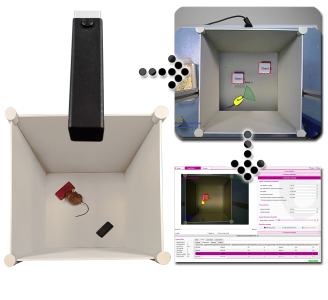Authors
J. Jackson, G. Bianco, A. Rosa, K. Cowan, P. Bond, O. Aninchtchik, R. Fern
Lab
Peninsula School of Medicine and Dentistry, University of Plymouth, PUPSMD, Plymouth, United Kingdom
Journal
Glia
Abstract
Myelin pathology rapidly followed the induction of a P301 tau mutation associated with fronto-temporal dementia in humans (rTG4510 line). Damage involved focal disruption of the ad-axonal myelin lamella and internal oligodendrocyte tongue process, followed by myelin remodeling with features of re-myelination that included myelin thinning and internodal shortening. The evolution of the re-myelinated phenotype was complete in the molecular layer of the dentate gyrus after 1 month and in the optic nerve (ON) after 9 months of transgene induction and proceeded in the absence of actual demyelination, reactive glial changes or inflammatory response. The initial rapid myelin pathology was associated with loss of WM function and performance decline in a novel recognition test and both these effects largely reversed during the myelin re-modeling phase. The initial phase of myelin injury was accompanied by disruption of the vesicle population present in the axoplasm of hippocampal and ON axons. Axoplasmic vesicle release is significant for the regulation of myelin plasticity and disruption of this pathway may underlie the myelin damage and remodeling evoked by tauopathy. WM dysfunction early in tauopathy will disorder neural circuits, the current findings suggest this event may make a significant contribution to early clinical deficit in dementia.
BIOSEB Instruments Used
Novel Object Recognition Test 3D (NORT-3D)
Source :

 Pain - Thermal Allodynia / Hyperalgesia
Pain - Thermal Allodynia / Hyperalgesia Pain - Spontaneous Pain - Postural Deficit
Pain - Spontaneous Pain - Postural Deficit Pain - Mechanical Allodynia / Hyperalgesia
Pain - Mechanical Allodynia / Hyperalgesia Learning/Memory - Attention - Addiction
Learning/Memory - Attention - Addiction Physiology & Respiratory Research
Physiology & Respiratory Research











![Dynamic Weight Bearing 2.0 – Postural Module [Add-on]](https://bioseb.com/733-home_default/dynamic-weight-bearing-20-add-on-postural-module.jpg)
























 Pain
Pain Central Nervous System (CNS)
Central Nervous System (CNS) Neurodegeneration
Neurodegeneration Sensory system
Sensory system Motor control
Motor control Mood Disorders
Mood Disorders Other disorders
Other disorders Muscular system
Muscular system Joints
Joints Metabolism
Metabolism Cross-disciplinary subjects
Cross-disciplinary subjects CONFERENCES & MEETINGS
CONFERENCES & MEETINGS 